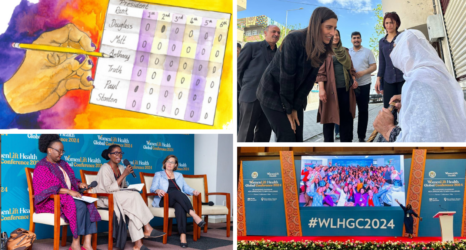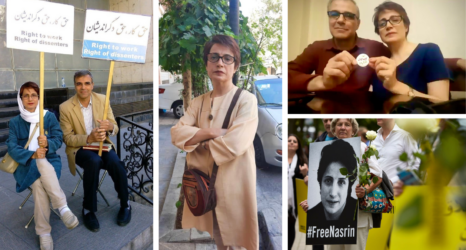In June 2016, Guatemalan weavers took their entitlements to the courts. Through a grassroots organization and with the aid of a lawyer group, they organized, congregated and had their voices heard—demanding protection of their designs and their way of life. For a group of women—poor and largely illiterate—that is what democracy looks like.
In May 2016, hundreds protested outside the Guatemalan Congress and the Supreme Court and demanded the government stitch a loophole in the intellectual property laws that now allow national and multinational companies to leap to “owning” and profiting from their ancient designs without fair compensation to the weavers. Indigenous activists testified at a public hearing on June 28 in Guatemala City at the Constitutional Court, arguing that the copyright laws should cover the Maya designs in the same way they protect the works of musicians and authors. They await an outcome.
This came after an Italian designer threatened a weaver with a lawsuit if she replicated the design she had just reproduced for the designer. She was told she could be sued because the designer had copyrighted the work. The weavers disagree. According to Angelina Aspuac, the spokesperson for the Women’s Association for the Development of Sacatepéquez or AFEDES, the grassroots organization leading the charge, their designs are rooted in the cosmovision of the Maya traditions. They dwell in the Weltanschauung of a community a few thousand years old and are more than an arrangement of thread and color.
In San Juan Comalapa, an indigenous Kacqchikal town of 40,000 just two hours Northwest of Guatemala City, each hand-woven and embroidered huipil (blouse) can be read as a narrative of history. According to Natalia Otzin, a 66-year-old weaver, the large red band running through the design signifies the sangria (red) of the bloodshed when they were conquered by the Spanish, multi-colored rhomboids are platos (plates) for sacrifices and animal-like figures walking through the design correspond to the sacrificial birds.
The art of weaving is done in the context of the Maya belief systems, customs and culture. Weavers learn their art from their family as early as seven years old and it is a way of preserving an ancestral heritage. Those designs shouldn’t be decontextualized, made by a machine or deconstructed, cut up and implanted on a designer handbag selling for $1,000. “It’s not just a design, it’s a story,” restaurateur and Spanish language teacher Amarildo Bal of Antigua said to Ms. “The stories are sagrado (sacred).”
But a series of social changes have endangered the practice of traditional weaving—and, thus, the income of thousands of families.“In a society where there is growing racismo (racism), girls don’t want to be identified as indigenous,” said Bal. Instead, they are increasingly assimilating—and, as a result, are less interested in wearing the traditional traje (clothes), which consists of a huipil, corta (skirt) and faja (sash). Another threat is that of the machine. When Comalapan weaver Otzin was young, all her clothes were handmade by her family members. Today, the markets are full of skirts made by machines that have been digitally programmed. These clothes are of lesser quality and last fewer years than handmade—and they are also less expensive.
The oversight of protecting the designs and those who weave them exemplifies the institutional racism that operates in Guatemala. Their communities are not given public services such as postal services, waste collection, running water or even electricity. Public schools only go to the sixth grade in towns as large as 40,000. The dominant culture exploits their artistry as a means to attract tourism, but weavers are not afforded well-paying positions with benefits within the economy.
Similar to struggles of the Navajo Nation against Pendleton in 2011 and the Inuit against the designer KTZ in 2015, the appropriation of ancient designs in order to make sales has a storied past. AFEDES says that Maya designs were forcibly extracted from women weavers and exported back to Spain soon after the Conquistadores invaded in 1523. More recently, the Panamanian indigenous won recognition of their broad contribution to the Panamanian culture through the landmark Law 20 enacted in June 2000. Law 20 is designed to protect traditional dress, music, dance and other traditional handicrafts. Panama has been strong in their protection of molas, the traditional blouses that would correspond to the huipils of Guatemala. Labels have been attached to molas to distinguish them from cheaper, less well-made knock-offs.
Women are the bedrock of the economy in Guatemala. They deliver tortillas to the men and children in the fields at noon, tend the home grocery store while doing their domestic chores, transport the vegetables and chickens to market and weave the clothes that cover their bodies. Sometimes the income they make from weaving can help to buy food or a cow to secure their long-term home economic needs.
“A machine can never replicate a weaving done by a woman,” Aspuac said. “It is important to save the designs not just for the income to the weavers, but for the way of life it conforms to.”





